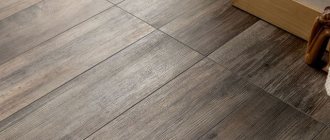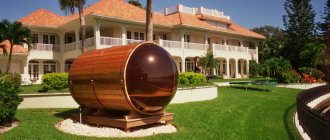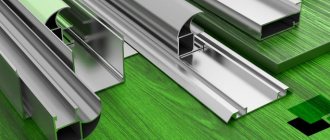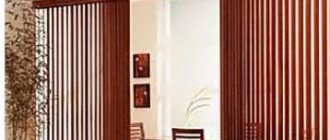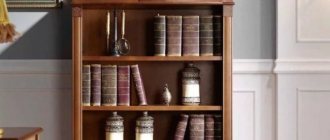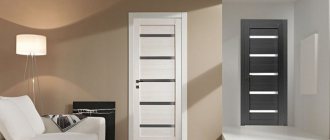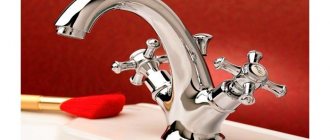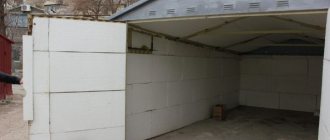| Place | Name | Characteristics in the rating |
| The best mineral insulation for floors |
| 1 | Expanded clay | The most environmentally friendly |
| 2 | Basalt wool | Better resistance to deformation. Long service life |
| 3 | Glass wool | Popular insulation for frame structures |
| 4 | Foam glass | The most durable insulation |
| 5 | Slag wool | Affordable price |
| The best polymer insulation for floors |
| 1 | Foamed polyethylene on a foil base | The thinnest insulation. High layer efficiency |
| 2 | Polyurethane foam | Monolithic coating |
| 3 | Expanded polystyrene (foam) | The most popular insulation |
| 4 | Penoizol-liquid foam | High fire resistance |
| 5 | Polyvinyl chloride (vinyl plastic) | Best thermal conductivity coefficient |
| The best wood chip insulation for floors |
| 1 | Chipboard | The most common floor insulation |
| 2 | Sawdust | Best price |
| 3 | Cellulose wool (ecowool) | The most environmentally friendly material. Provides microclimatic balance |
| 4 | OSB | Better moisture resistance |
| 5 | Plywood | Optimal thermal conductivity characteristics |
Three main ways to insulate floors in a private home
The base is a reinforced concrete slab, a wooden subfloor on joists or soil. Warming is carried out in a certain order. It is advisable to entrust the process to professionals, but to understand what is happening, you can familiarize yourself with the algorithms.
Thermal insulation device for the floor on a reinforced concrete slab
- The surface is cleaned, leveled, and the seams are sealed with mortar.
- Lay a vapor barrier film with sizing of joints if mineral-based insulation is used. Polystyrenes do not need protection from moisture.
- Place thermal insulation - slab, roll, bulk.
- Reinforce the surface with mesh.
- Fill the cement-sand screed.
- In damp rooms, waterproofing is installed to protect the insulation from moisture.
- Install the covering - laminate; tiles; parquet; board.
Thermal insulation of floors on joists
- Logs—beams with a special cross-section—are laid on the support columns.
- A galvanized mesh or board is attached to the bottom of the beams.
- A wind and moisture protective membrane is spread, the joints are glued, and secured with a stapler to the beam.
- Insulation is laid - slabs, rolled materials with a thickness no less than that calculated for a given climatic zone.
- The top is insulated from moisture with steam and waterproofing, securing it to the joists and gluing the joints.
- Plywood or boards are placed along the top of the structure and fixed to the sheathing. This is the base for the finished floor.
Sometimes thermal insulation is laid in two layers. In this case, the bars of the second level are installed perpendicular to the first.
Thermal insulation of floors laid on the ground
- Prepare the base - cut off the soil, fill it with sand and crushed stone, and compact it.
- Concrete is poured and the surface is leveled.
- A hydro-vapor barrier made of film or roofing material is laid on top.
- Thermal insulation is installed - extruded polystyrene foam, it is not afraid of moisture.
- Reinforced with mesh and fiberglass.
- A finishing screed is arranged in which a heated floor system can be placed.
- Finishing the surface.
Option #5 - cork material
To insulate the floor with a light, safe and thin material, use cork fiber. This is the best insulation for linoleum floors. The best, but also one of the most expensive. In addition to thermal insulation qualities, it is durable and moisture resistant.
Cork material for insulation - modern and fashionable
This material can be laid either as a substrate under floor coverings or used as an independent floor covering. In the latter case, the cork slabs are additionally polished and varnished. You will get a natural, beautiful warm floor.
Option #4 - glass wool and mineral wool
These types of insulation are widely used to insulate roofs, walls and floors due to their low cost. These materials come in the form of slabs or rolls. They are most often used to insulate wooden floors due to the vapor permeability of the material.
Place mineral wool and glass wool between the joists. But the composition of these materials makes us think: the release of dangerous chemicals, although within safe standards, is still present.
Laying mineral wool between wooden floor joists
Glass wool must be carefully insulated so that dust does not enter the room when it wears out. When laying such materials, it is important to leave a ventilation gap. The disadvantages of these materials include their weight and moisture absorption.

